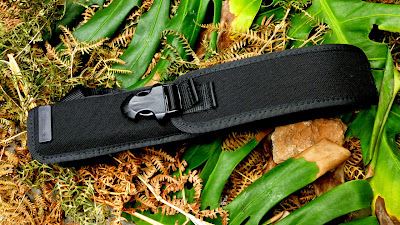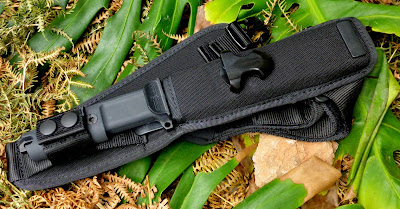SURVIVAL KNIVES PART 2
What is this survival knife thing? Why is everyone (well almost everyone) in YouTube land etc so hung up about it?
Why have the words "survival knife" become the: biggest key search words; manufacturers marketing weapon of choice;
Other than the knife you happen to have on you at the time and that's important of course.When i think "survival knife", I simply think of a sturdy well made knife with about a 7 inch blade but under 8 inches (exceptions are machetes; parangs; Panabas; Kukris etc)
For example but of course not limited to a knife such as this seen below.
One piece (in this case Forprene) handle resistant to impact; and extremes of cold and heat. Ok basically that means it isn't going to break and if it did it would mean your hand is going to break too, if your knife sustains such a great force!| The FKMD Parus, pictured here after just chopping open a green coconut on a piece of drift wood washed up on a coastline |
All this about knife handles breaking and having to cord wrap or otherwise your full tang knife, are fantasies of armchair survivalists.
Strong tang (not necessarily a full width tang-see my other related blog); with first fixing bolt back from the fulcrum of the knife, ie no weak point at the fulcrum, where the force could be very large in some instances. eg levering.
BTW I've "survived" on an island (with one other) with nothing but a fishing rod, one lure (which had to be retrieved once when I got it stuck on the coral reef, which meant putting on our only mask and snorkel and fins, swimming out into the fierce current, diving down to unhook the lure and making sure I didn't get hooked up myself and swimming safely back to to beach. Why, because as a "survival tool" that lure was very precious to our comfortable existence there.) Anyway I get distracted, what I was going to say was we only had one carbon steel, secondhand machete (actually a coconut parang bought at a coconut processing plant for 5 USD!) and a Leatherman wave multitool, plus a Swiss army knife (which, the latter BTW was left on the mainland so not with us. In other words, no fancy pants survival knives were with us, just the knives we had on us at the time!
Stainless steel; You don't want it to rust, a rusty knife can harbour bacteria and protozoa like giardia, these organisms can make you sick. Stainless is simply easier to keep clean and hygienic.
Blade Coatings? such as:Cerakote (polymer/ceramic composite) but not limited to. Coating plays almost no practical role in knife functionality (with exception of an anti-glare surface). Not a survival requirement except for stealth in "urban civil unrest survival ie war".
Sturdy synthetic sheath Molle compatible. Adaptable to carry by several means.
HRC 58-60; under 60 will be easier to sharpen than greater than 60 HRC, that's physics!
Lanyard hole, I won't loose it down a hole, if I use a cord in it.
Good point for penetration for gutting fish piercing hides.
Large recurve section excellent for cutting ropes and vines and other fibrous materials.
A large belly with weighted front end for chopping and skinning.
5mm sheet construction, strong enough to take a beating.
good finger ramps/gimping is present.
A good many knives will fall into this survival category based upon those above points. They do not need to have multiple grinds, and a good solid drop point works just fine in capable hands.
And that brings me to the point of knowing how to get the best out of your chosen knife. Know how to handle it, what is easy to cut, what is hard to cut, how to gut fish with it and skin and butcher game with it. Learn how to hunt. A "survival knife" is no good if you don't know the first thing about fishing or hunting; it (Survival knife) just becomes a name for armchair survivalists.
Remember, short term survival has nothing to do with knives, it has all to do with: safety, shelter, water and food and getting rescued.
There are many out there advocating a great many blades styles and shapes for survival knives but let me tell you this. First learn about hunting and fishing and camping (inclusive) through this you will learn what knives work and what knives don't and when and where to take certain knife designs, dependent on the environment you venture into and what you plan to do.





